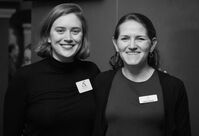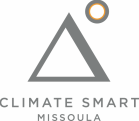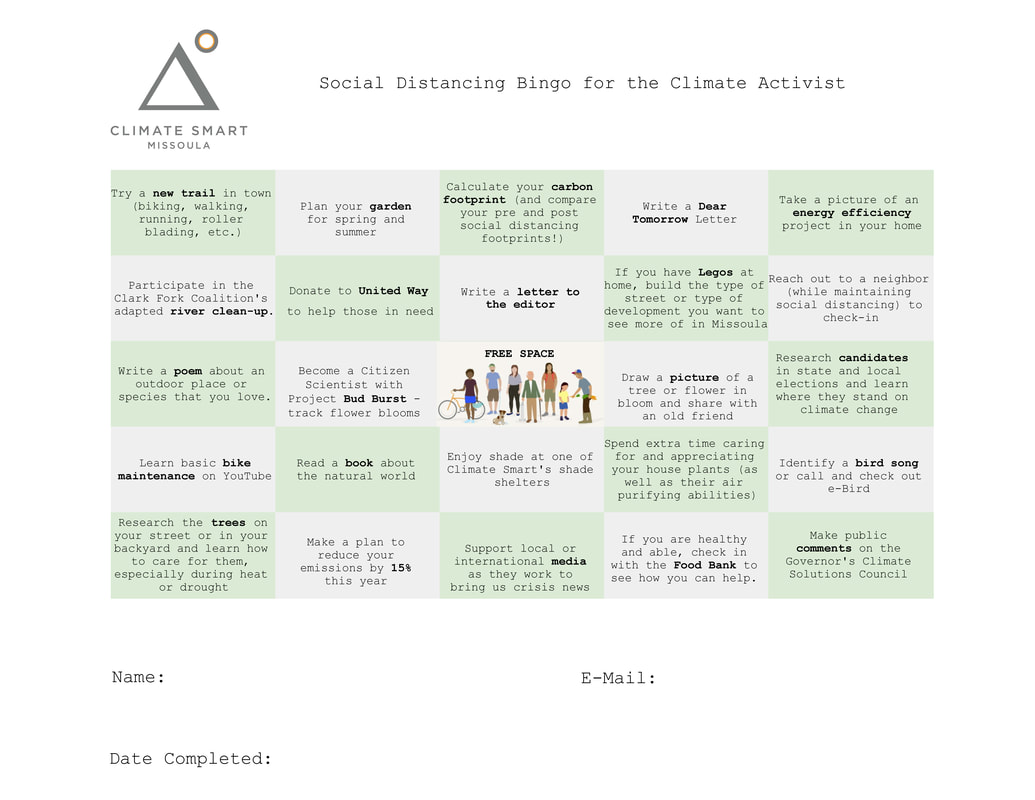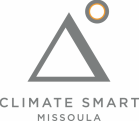|
Imagine Missoula as a 1000 piece puzzle. Every piece needs to fit into place for it to be complete. They don’t all touch, but the bottom right corner would be nothing without the top left corner and every piece in between. The Missoula landscape is no doubt a puzzle. In order to complete our “Smart Growth puzzle”, every new development and infrastructure project, or puzzle piece, must echo the smart growth principles if it is to fit. Piece by piece we are developing a resilient, healthy, and connected community.
The COVID-19 pandemic is at the front of everyone’s mind right now. While we are responding to the immediate needs in our community and supporting organizations serving those hardest hit by the crisis, we can also continue our work to build a future that is just and sustainable. What if we told you there was an opportunity right now to design what the next “puzzle pieces” will look like? The Mullan Area Master Plan is hosting a Public Design Charrette this week, featuring redesigned virtual activities to invite online participation while we are socially distant. Throughout the week, the City and County along with a consultant team of Dover, Kohl & Partners, Territorial Landworks, Inc., and Jacobs, are hosting several virtual sessions where citizens, designers, community leaders, and technical experts can collaborate and develop a vision for future growth. The Mullan Area is a big piece of our puzzle, comprising 2,000 acres between Mullan Rd. and West Broadway, west of Reserve Street and east of the airport. That’s almost double the size of downtown! This master plan is a perfect opportunity to align land use planning within Missoula to our goals and values as a climate smart community, and your involvement is important. This week there are virtual open studios each morning and afternoon, and live meetings about water quality, transportation, climate adaptation, and more that you can participate in through chat functions and public comment sessions. Check the schedule and join any of the meetings you find relevant. And then offer your online comments. You can read more about the project and how to be involved in the process here. When Professor Rob Davies gave his presentation in Missoula, he shared many sobering facts, one of which was that if the average American were to never turn on their heat, drive their car, or use fossil fuels in any way, each person would still burn through 6 tons of carbon per year (we are each allotted 44 tons of carbon as our lifetime’s budget). This is because of the systems around us and the infrastructure that has been built to support the way we live. Smarter land use and growth policies are one way we can create systemic change that allows us to lead lower impact lives. For those of you who want to learn more, take the opportunity to get acquainted with the proposed developments in our community, read a bit about our vision for transportation and smart growth in our community and be an advocate for climate smart transportation, transit-oriented development and pedestrian scale design! We’ll continue to update our Smart Growth and Land Use Planning page with upcoming development and infrastructure projects and other opportunities for you to support our low-carbon transportation goals and ensure that our community continues to grow wisely. -Alli and Caroline
0 Comments
We, like so many of you, are settling in to a new rhythm at work. The "office" is now our kitchen table or old puzzle table, and our typical office banter has been replaced with phone calls and e-mail chains. There are so many things to hold in our heads and hearts right now, and I've struggled with the uncertainty of what the next few weeks will look like in our country, state, and city. It's critical for all of us to be responsible citizens and socially distance ourselves from one another - and it's scary and hard. But it's also an opportunity to move closer to nature, think deeply about the things we care about but don't have time for in a typical day, and reconnect with the ordinary wonders that surround us every day in Missoula. It's a time to both reflect and look forward, to take stock of and give thanks for what we have and prepare for the future. In that spirit, we'll be sharing more of what we're reading, listening to, and thinking about with all of you regularly on our blog, as well as offering some things you can do so you can turn off the news notifications for a bit and take a moment to breathe. In the meantime, we'd like to offer a social isolation bingo card (it's climate and action related!) for you to enjoy while you're maintaining a respectful 6-foot space. We'll be featuring various squares on our social media channels and in our newsletter, so please tag us or e-mail us if you have photos or stories you'd like to share while doing the activity. Everyone who successfully completes B - I - N - G - O (up, down, or diagonal) and e-mails us a picture of their bingo, will be entered to win a raffle. More soon - Caroline and the Climate Smart Team
 On February 19, Dr. Rob Davies, spoke to a packed audience (700+!) at the Wilma Theater about the scale of the planetary crisis and the urgent action needed to address it. Suffice to say, we were blown away by his presentation - and we’ve seen our share of climate talks. If you weren’t at the Big Event, we highly recommend watching the video of Rob’s presentation HERE (thanks, MCAT!). And, check out our post-event page with a whole slew of ideas for how to ACT, ADVOCATE, and ASSIST others. We’ve been thinking about the presentation A LOT since we’ve seen it, and thought we’d share some of our big takeaways in the form of a conversation between Caroline and Abby. And we’d love to hear your takeaways, too! Abby: Well, that wasn’t your average climate talk. What were the things that stuck with you? Caroline: So many things! Davies really made clear the need for both individual and systemic change, especially in the United States. My favorite statistic spoke to this - if we took the planet’s total carbon budget (how much we can emit and still get to zero by mid-century) and divided it by the world’s population, each of us would have 44 tons of carbon as our lifetime’s budget. The average American would use their budget in 2.5 years. Abby: Yikes. That’s crazy. Caroline: I know. I heard this and thought, ‘Well, we all need to shrink our footprints as close to zero as possible,” but then Davies hit us with another incredible fact. If the average American were to never turn on their heat, drive their car, or use fossil fuels in any way, each person would still burn through 6 tons of carbon per year. As Davies put it, even if we were to go into our basements tonight and decompose on some garden seeds, we only buy ourselves an extra 5 years. This is because of the systems around us and the infrastructure that has been built to support the way we live. We need individual change, but it only gets us so far. We desperately need structural change, too. Abby: Absolutely. Endless growth can’t be our global economic ideal anymore. That’s not politics, it’s just physics. Rob really nailed home that point - he actually called growth a “pathology” underlying the symptom of climate change. But he also gave us a hint as to what a more sustainable level of consumption could look like, which helped me put this in perspective. Global emissions would drop by a third if us wealthy high-emitters were to adopt a lifestyle more like that of the average European citizen. Or as Rob put it, for those of us in the top 20 percent of global material and energy consumption (virtually all Americans) that produce 80 percent of global carbon emissions, “there’s a lot of slush at the top” that can be cut without reducing our quality of life. If our goal is not growth but a society and planet that is sustainable, just, and vibrant, making the necessary changes will be hard but maybe not as scary as one might think. Caroline: No, not as scary. But we certainly need to avoid the tipping points that he described. Abby: For sure. That was one of the truly astonishing things Rob communicated in his presentation: we’re approaching tipping points not just in our climate system, but in ALL systems that support life: air, water, soil. Crossing the threshhold of these tipping points would unleash global, catastrophic disruption. Rob pointed out that catastrophic means something very specific in the science community: unadaptable. And some people in some places are already experiencing such catastrophic, unadaptable changes, but there is still time to avoid tipping points that would lead to such disruption across the globe. It’s a difference between a planet that is livable and one that is unadaptable. Caroline: Yeah, it’s hard to hear that, but important to know the reality of the situation we’re in, so we can respond in a way that meets the moment. Abby: Exactly. And I don’t know about you, but Rob’s description about how to respond to the climate emergency was maybe the most powerful piece of his whole talk, which is saying something. Caroline: I totally agree. Davies talked about a shift from a mindset of hope/despair, to one of resolve and determination. So often I have wanted to ask climate scientists and activists, “Are you hopeful?” Maybe this is the wrong question. “Hope isn’t free,” said Davies. If we want hope, we have to act - not the other way around. We must be resolved to “take the next step,” even if we cannot see the entire path to the top of the mountain. This reframing has made it easier for me to take action even on the days when I am sad, scared, or anxious. Abby: Exactly. It is reasonable to feel daunted by the challenge in front of us. But knowing that we are in a climate emergency changes our mindset about our response, and can actually help us take action. It was so helpful to hear Davies put it this way: “When you’re in a burning building, you don’t waste time hoping or despairing, you just get out. You take the next step, then the next step, then the next. It’s about absolute, unwavering resolve and commitment.” Caroline: And I loved this idea: that in an emergency, what once may have been radical, is now rational. And what is necessary becomes what is viable. Abby: Yes! That was a revelation. Any other revelations? Caroline: Lately I’ve been reflecting on Davies’ presentation in the context of a book I recently finished, We are the Weather by Jonathan Safran Foer. Foer references the Bible - go with me here - where there are several moments when God asks people where they are. Foer writes, “His questions are not about the location of a body in space but about the location of a self within a person,” and he points to our own modern day versions of this, when we ask people where they were at pivotal moments in our shared history: the assassination of John F. Kennedy, the fall of the Berlin Wall, or September 11th. “As with God in the Bible, we are not really trying to establish someone’s coordinates. We are asking something deeper about their connection to the moment, with the hope of situating our own...Future generations will almost certainly look back and wonder where we were in the biblical sense: Where was our selfhood? What decisions did the crisis inspire?” I hope one day we’ll ask: Where were you when you made your decision to take the next step to address the climate emergency? Abby: I hope that, at least for some of those in the audience, they can mark February 19th at the Wilma as one of those decision points. I know I’ve had those moments that have given me the resolve to continue doing this work, and Rob’s presentation was definitely one of them. Caroline: Any last thoughts? Abby: So many - but I’ll just mention one more! I read a quote the other day by the author Rebecca Solnit, from her book Hope in the Dark. It said, “Inside the word ‘emergency" is ‘emerge’; from an emergency new things come forth. The old certainties are crumbling fast, but danger and possibility are sisters.” That’s what Rob’s presentation was all about. Every day we are resolved to take the next step, we show that a livable future is possible. |
AuthorsAbby Huseth Archives
July 2024
Categories
All
|
||||||


 RSS Feed
RSS Feed


